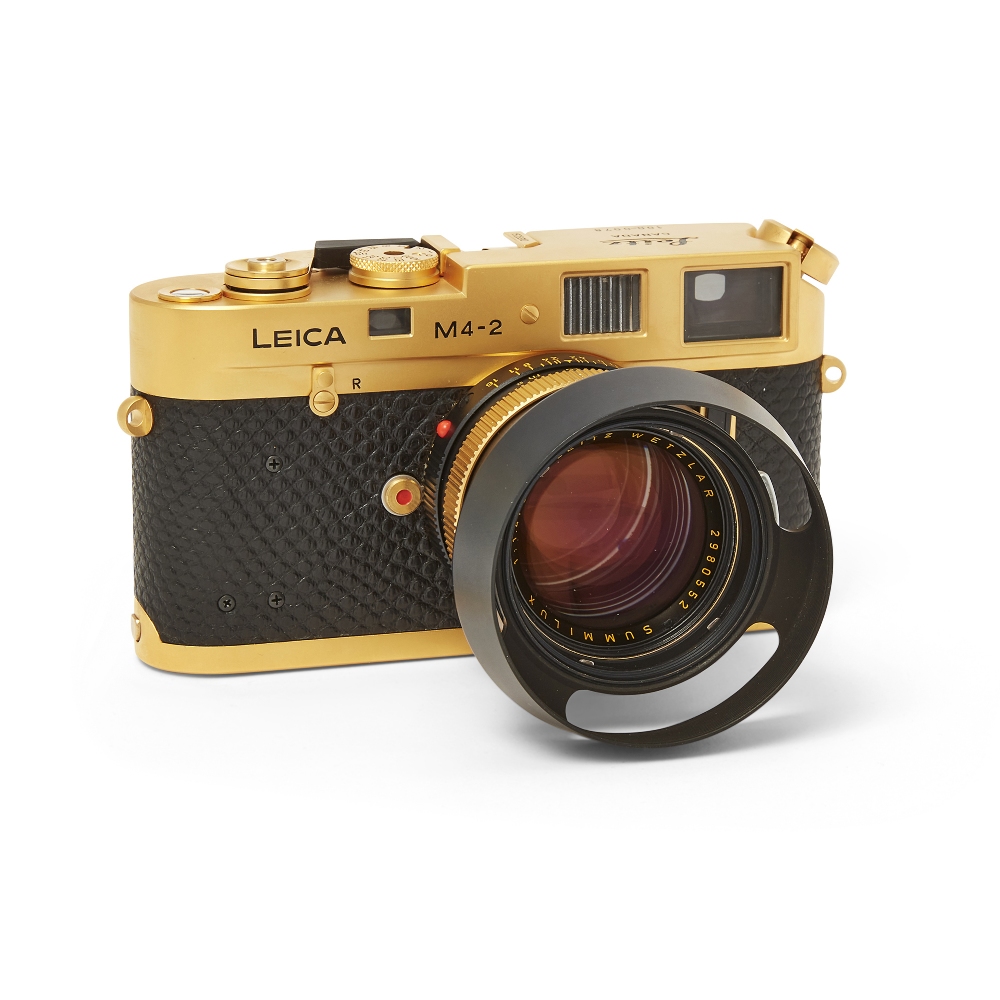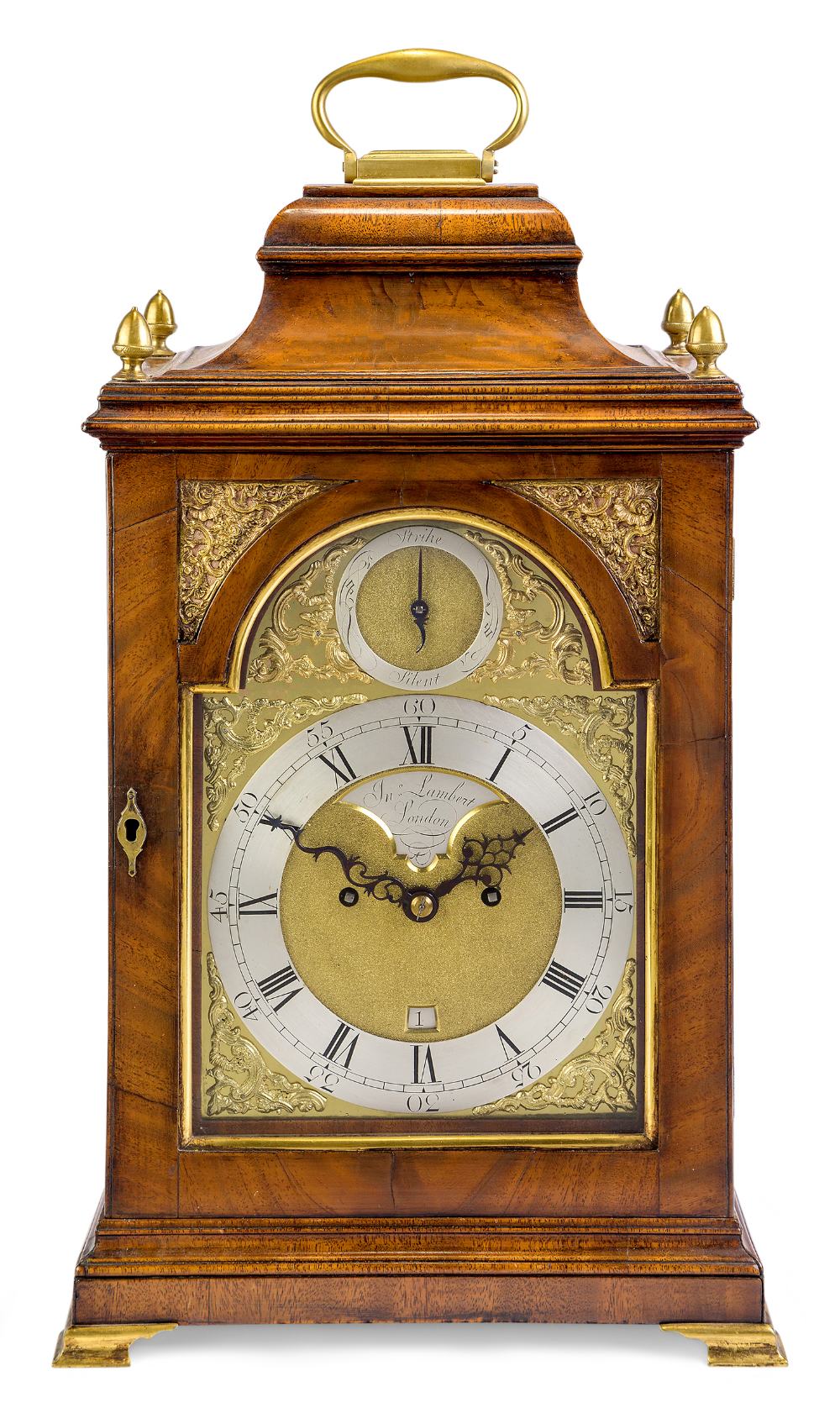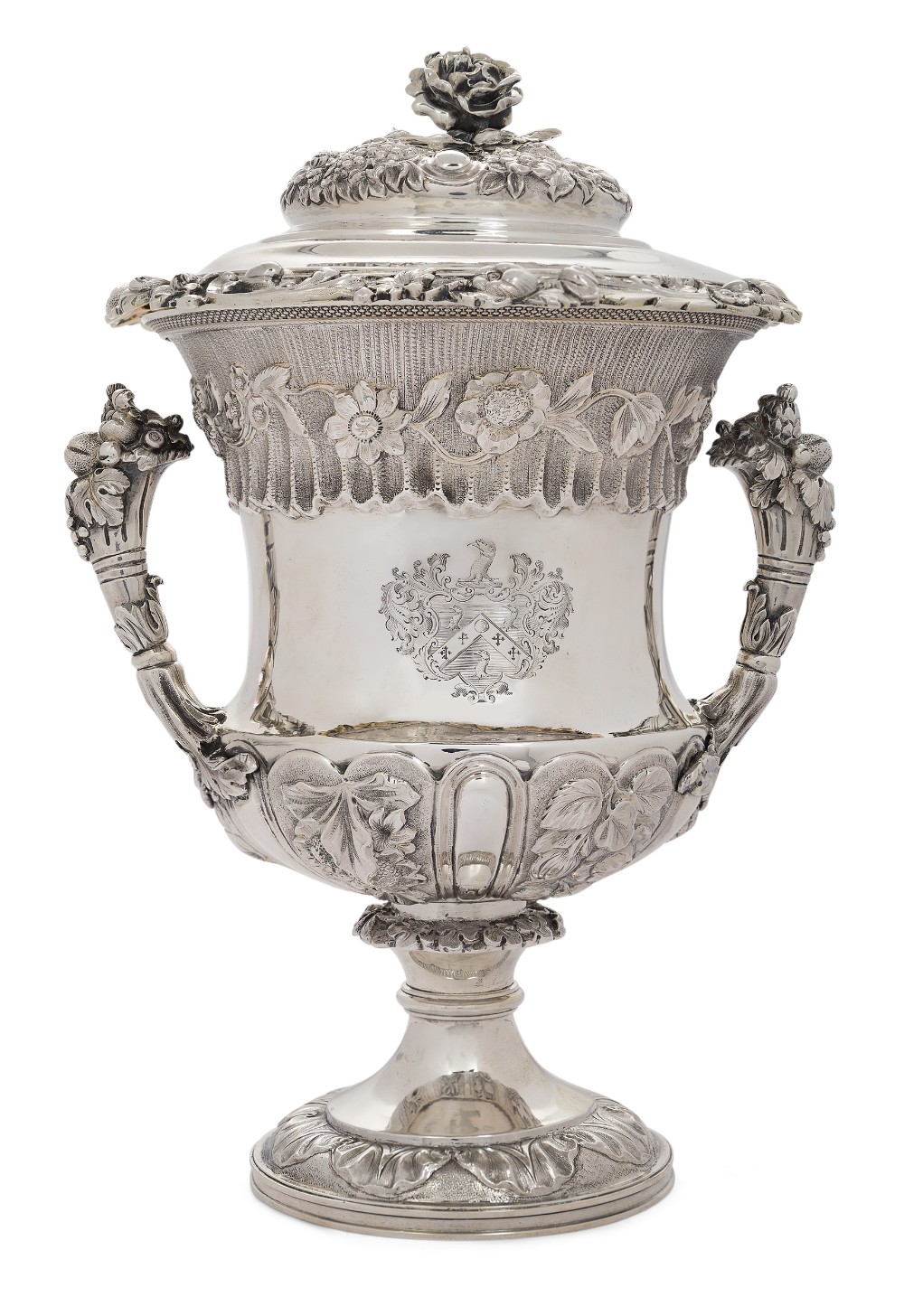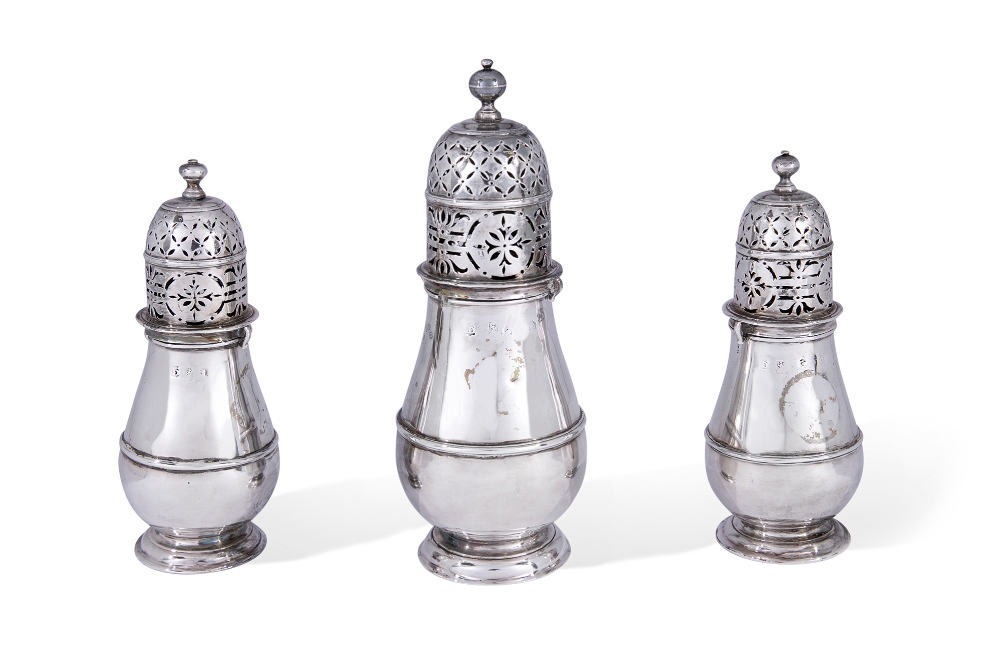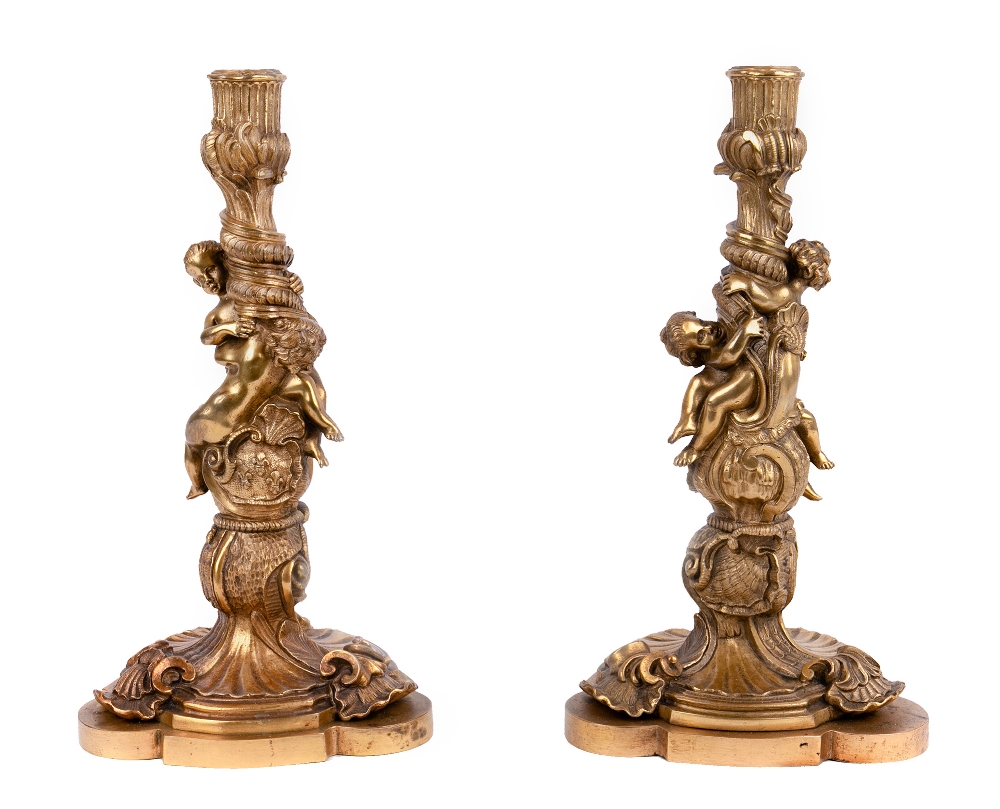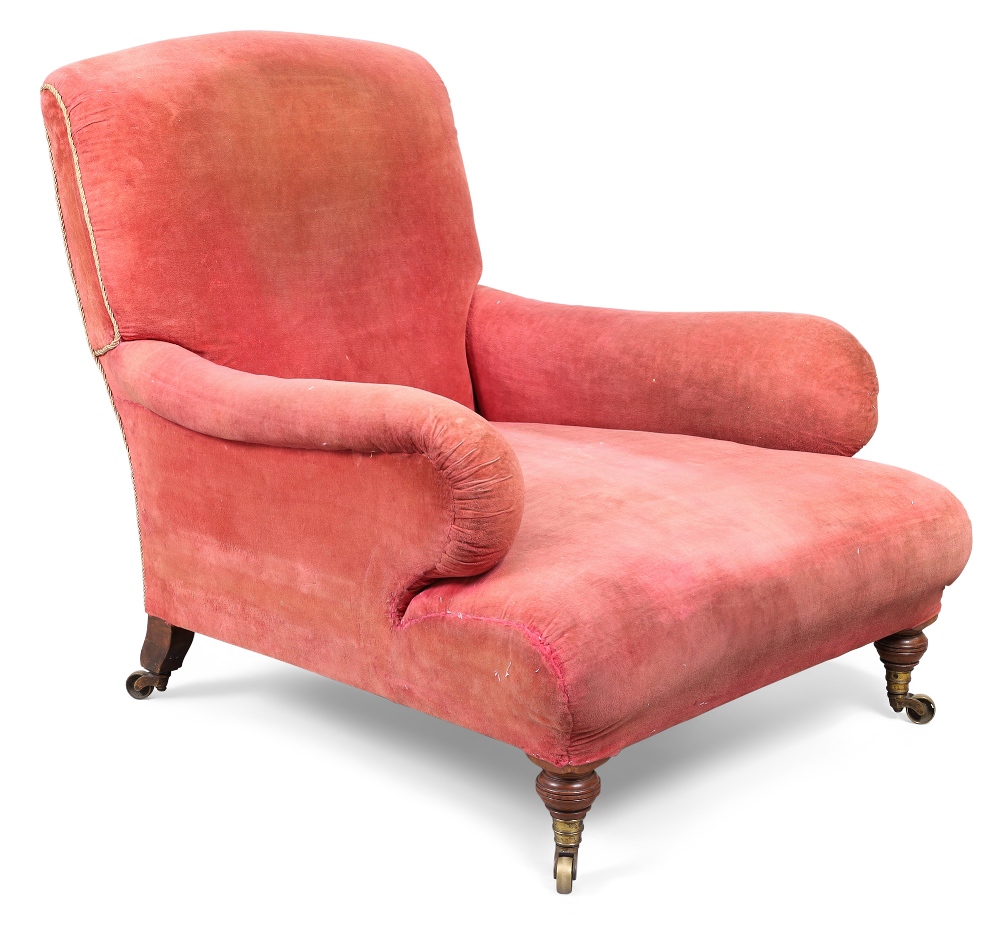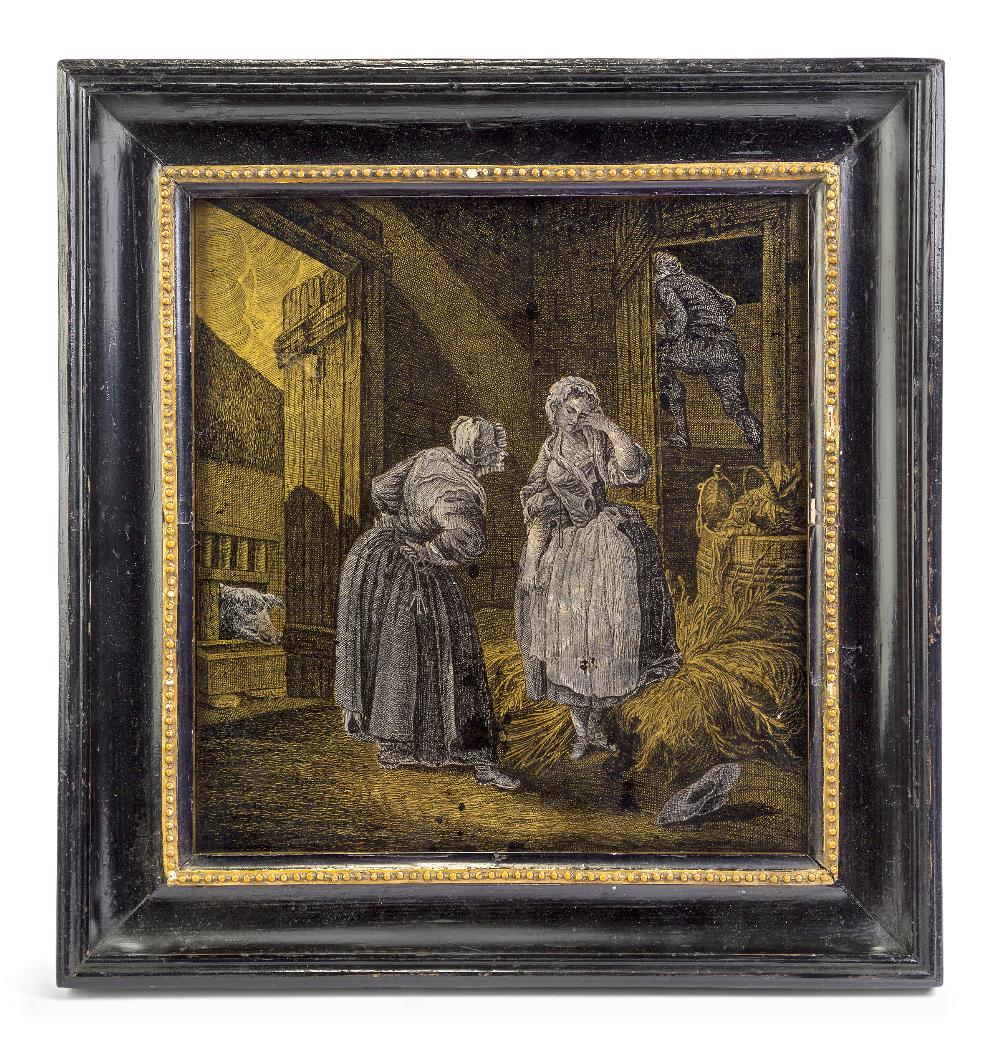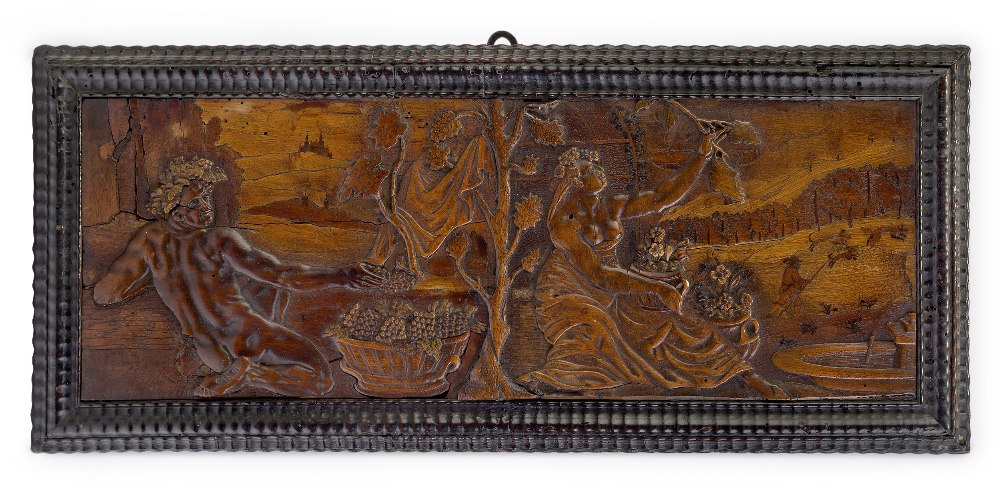On May 24th, Roseberys are presenting a Fine & Decorative sale led by a fresh-to-market collection of furniture and works of art (from the “Property of a Gentleman removed from a Knightsbridge Apartment”) including fine English and French furnishings collected over the last 40 years. Following on from the success of the collection of porcelain in February’s Fine & Decorative sale, Roseberys are delighted to include further items from the Robert G. Vater collection of European ceramics: a small but enticing offering of wide-ranging porcelain from the academic collection of Robert and Ilse Vater, collected through their married life.
Lot 245: An Oskar Barnack Centenary De Luxe Leica M4-2 35mm rangefinder camera, c.1979-80
Alongside these two collections is an appealing range of silver, clocks, sculpture, Leica cameras (including a rare limited edition gold-plated Oskar Barnack Centenary De Luxe Leica M4-2 rangefinder, lot number 245 with an estimate of £3,000 - £5,000) and over 50 lots of wine and spirits. The sale provides a wonderful opportunity to acquire pieces at approachable estimates for furnishing your home or adding to your collection.
Lot 239: A George III mahogany repeating table clock, John Lambert, last quarter 18th century
One standout highlight of the upcoming Fine & Decorative auction is lot 239, a George III mahogany repeating table clock by John Lambert in the late 18th century. John Lambert is documented by historian Granville Hugh Baillie as having worked on London’s Shug Lane in 1784, but little else is known about him. The 51 cm high clock comes to Roseberys from a private London collection and features acorn finials, rococo style brass quadrants, brass bracket feet, a pear-shaped bob pendulum, and a gilt matted centre with silvered plate signed ‘Jn Lambert London’ and date aperture at six. The backplate is finely engraved with scrolling flowers and foliage, adding to the dainty beauty of the piece. The clock face features Roman numerals and Arabic five minute marks. Lot 239 comes to Roseberys with a £6,000 to £8,000 estimate, and is sure to garner great interest as this fine example of his Lambert’s work epitomises the precision and artistry of Georgian clock making.
Lot 177: A Meissen porcelain figural group of Empress Elizabeth of Russia, early 20th century
Another beautiful decorative item is lot 177, a Meissen porcelain figural group of Empress Elizaveta Petrovna of Russia dating to the early 20th century. Elizaveta was the second-oldest daughter of Peter the Great and Catherine I of Russia and was very popular during her 1741 - 1762 rule, in part due to her decision to have absolutely no one executed during her reign. Meissen porcelain was Europe’s first hard-paste porcelain factory and has been produced at the Meissen factory in Saxony since 1710. The group features a blue crossed-swords mark, is incised ‘model no. 1059’ and impressed ‘149’. Made after the model by J. J. Kändler, the Empress is seen riding astride on a rearing white horse, wearing the insignia of the Order of Saint Andrew. The Tsarina wears the military dress of a colonel of the Preobraschenski Guard regiment (who had supported her putsch of December 1741 and assisted in her attainment of the Imperial Crown). She holds a baton in her outstretched right hand, attended by a blackamoor, on an oval grassy bass with applied flowers. This composition is based on the Georg Christoph Grooth painting ‘Portrait of Tsarina Elisabeth Petrovna on horse’ made in the mid- to late 1740s, which is currently held in the Tretyakov State Gallery in Moscow. Grooth was a German-born painter best-known for his Imperial Russian commissions and for his role as the first official “gallery inspector” of the imperial collections in Saint Petersburg. Measuring 24cm high, this lot is estimated at £2,000 to £3,000.
Lot 1: An impressive George IV silver cup and cover, London, 1828, Hyam Hyams
Highlights from the silver and works of arts sections include lots 1, 2, 8, and 308 - in particular - would make for an excellent dining experience. Lot 1 is an impressive George IV silver cup and cover, made in London in 1828 by Hyam Hyams (a Jewish silversmith and jewellery active between 1813 and 1851, not the Jack the Ripper suspect of the same name) featuring twin handles designed as horns of plenty to a campana-shaped body with gilded interior and a fluted lower section decorated with repousse flowers and foliage. Lot 1 is a very fine example in excellent condition, with original gilding remains to the interior and its elaborate decoration beautifully crisp. Lot 2 is earlier Georgian (George II) silver, this time engraved plates made in London in 1744 by John Hugh Le Sage, engraved with the Royal Cypher & Crown. Le Sage was apprenticed to Louis Cuny and went on to become the subordinate Goldsmith to King George II, explaining why this work is marked with the Sovereign crown. The Royal arms and initials of the Barony of Fauconberg and Conyers to the reverse of these dishes suggest that they were originally issued by the royal Jewel House. Their provenance can be traced from the mid-18th to the mid-20th centuries, making them particularly interesting for history enthusiasts and collectors of objects which have passed through noble households - in this case, beginning with the Earl of Holderness and Baron of Conyers Robert D’Arcy (1718 - 1778). Both Georgian pieces have estimates of £1,500 to £2,500.
Lot 8: A set of three Queen Anne Britannia silver sugar casters by Charles Adam, London
Lot 8 is a set of three Queen Anne Britannia silver sugar casters made by Charles Adam, hallmarked in 1712. Adam was a highly regarded 18th century silversmith who had been apprenticed to Francis Archibold in 1682 and became known for his quality casters. It is exceedingly rare to find a set of Queen Anne casters today - especially ones of this fine quality which have been highly prized for the simplicity of their plain, baluster form - making this lot particularly special. They come to auction with an estimate of £1,000 to £2,000.
Lot 308: A pair of Louis XV ormolu candlesticks, c.1745-49
Completing the silver and works of art highlights is lot 308, a pair of Louis XV ormolu candlesticks made during the late 1740s, modelled after the drawing ‘Chandelier de sculpture en argent inventés’ by Juste-Auréle Meissonnier and engraved by Louis Desplaces. Meissonnier was a master of many mediums - painting, sculpture, architecture, and furniture design as well as goldsmithing. He was born and trained in Italy which gave his works a deeply Rococo decorative style which brought him great popularity in France. Each 32 cm high candlestick is stamped with the ‘C’ couronné poinçon - a tax mark employed on any copper-containing alloy between March 1745 and February 1749 in France. They are decorated with palm-wrapped nozzles with putti resting on cartouches adorned with fleurs-de-lys and rocaille shells on their spreading bases. This beautiful pair has an estimate of £4,000 to £6,000, and several related pairs are known including one in London’s Wallace Collection produced by F. J. B. Watson.
Lot 466: A Louis XV kingwood bombe commode, third quarter 18th century
Several wonderful pieces of fine furniture will be available at Roseberys this May, including lot 466, a Louis XV kingwood serpentine front bombe commode made during the last quarter of the 18th century by Pierre Roussel. Roussel was a prolific cabinetmaker (later supported by his two sons) and one of Paris’ leading furniture makers and dealers. In the 1770s he provided the Prince de Condé with 10,000 livres’ worth of furniture. This piece has two short and two long drawers, splayed feet, a later marble top, and ‘P. Roussel’ stamped to the top of the carcass. Measuring 86 cm by 103 cm and 64 cm deep, this commode is as practical today as it was when it was new. Its estimate is £2,000 to £3,000.
Lot 459: Howard & Sons, a walnut framed armchair, first quarter 20th century
Further furniture highlights include lot 459, a Howard & Sons walnut framed armchair made during the first quarter of the 20th century. Howard & Sons - which still runs to this day - was established 200 years ago by the cabinetmaker John Howard, quickly becoming an iconic name in Victorian England. Their beautiful pieces are regarded as top-tier upholstered furniture, and their chairs and sofas are as enduringly popular today as they were in the 19th century. This chair is upholstered in salmon pink velour and is raised on turned bun feet with brass caps and castors (both front castors stamped ‘Howard & sons’ and the back left foot stamped ‘1661 5402’). This piece exemplifies the perfect combination of style, comfort, and quality for which Howard & Sons are known, and has an estimate of £800 to £1,200.
Lot 291: A Dutch verre églomisé picture, by Jonas Zeuner, Dutch, 1727-1814, c.1790
The star maker in the upcoming Fine & Decorative sale is Jonas Zeuner, by whom Roseberys is lucky to have two lots on offer. Zeuner was born in Kassel and settled in Amsterdam around 1750. He is best-known for his engravings in gold and silver leaf (verre églomisé) which were very popular within fashionable Dutch society. His works often depicted townscapes and canal scenes, or were based on engravings by artists like Jan de Beyer, Simon Fokke, and Wiebrand Hendriks. It is believed that the artist lived briefly in England during the first decade of the 1800s and produced several works showing English landscapes. The first lot, lot 291, is a verre églomisé picture showing a farmer’s wife discovering lovers in a countryside barn. The piece is signed ‘Zeuner inv:’ to the lower right and is framed in an ebonised wooden frame. It comes to Roseberys with a £1,000 to £1,500 estimate and great provenance, having been purchased from Christie’s in London in April 1983. A second verre églomisé work by Zeuner (also purchased at Christie’s London during the first years of the 1980s) - lot 292 - shows another country landscape, this time in a later tortoiseshell, bone, and mirrored inlaid frame. Lot 292 is the smaller of the two works, reflected in its lower estimate of £300 to £500.
Lot 267: A carved soft and fruit wood intarsia relief of Bacchus and Ceres, Eger Workshops
A final fine art highlight of the upcoming Fine & Decorative sale at Roseberys on May 24th is lot 267, a carved soft and fruitwood intarsia relief of Bacchus and Ceres made by Eger Workshops, possibly by Adam Eck or Johann Georg Fischer for whom mythological and historical subjects were favourites. This style of workmanship is generally attributed to the town of Eger in present-day Czech Republic, which uniquely specialised in this type of intarsia and low relief veneering from the end of the 16th century to the beginning of the 18th century. Bacchus was the ancient Greco-Roman god of wine, agriculture, fertility and festivity, and through history he became indistinguishable from Liber, the son of the ancient Roman goddess Ceres, who also ruled over Bacchus’ domains. Lot 267 shows a typical scene for these characters - Bacchus picking grapes with vines in his hair, and Ceres holding an urn filled with flowers. The 17th century piece was formally the lid to a casket and is mounted in a ripple moulded ebonised frame measuring 21 x 50 cm overall. This lot’s estimate is £800 to £1,200.


